Rai Kunitoshi-Magotaro
Kamakura, Genkō two, 1322]\ 2nd Yr 1322 AD,
worn by Kagoshima daimyō Shimazu Narinobu (島津斎宣, 1773-1841)
Tokubetsu Juyo - an Art Treasure
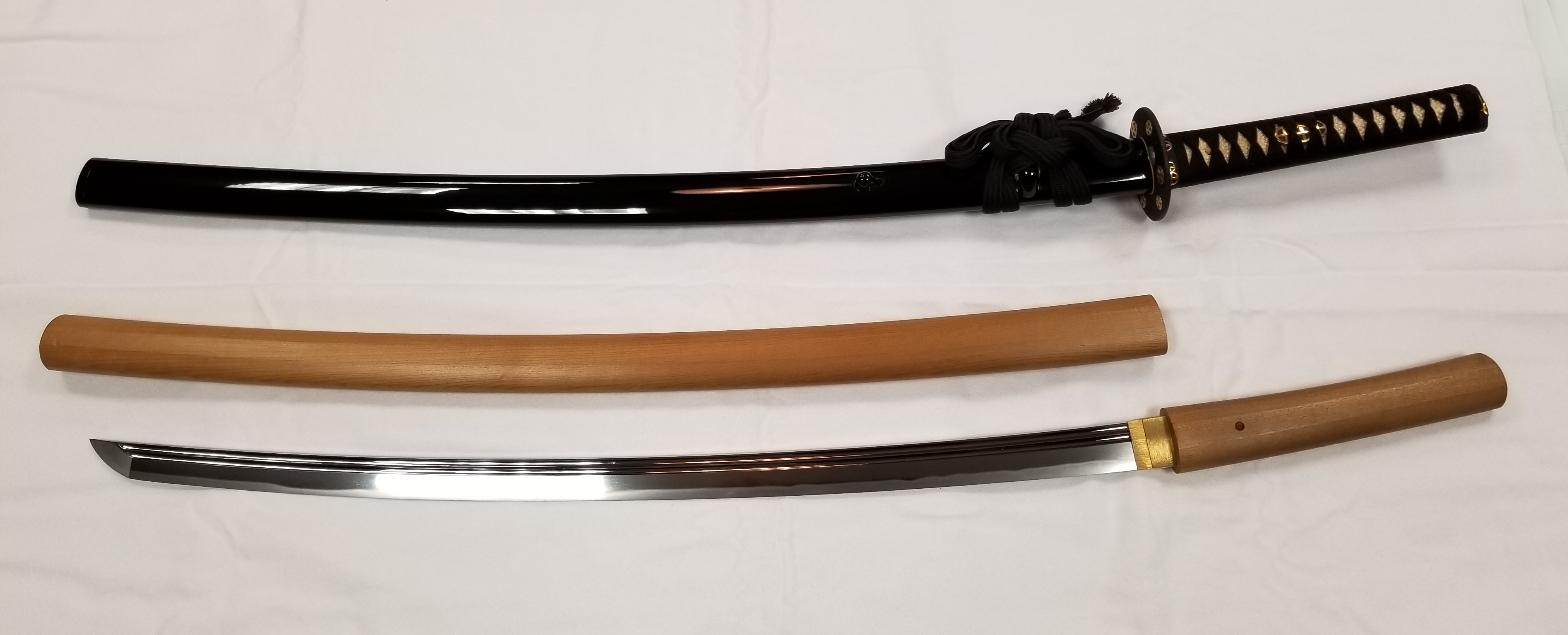
Juyo Token certificate
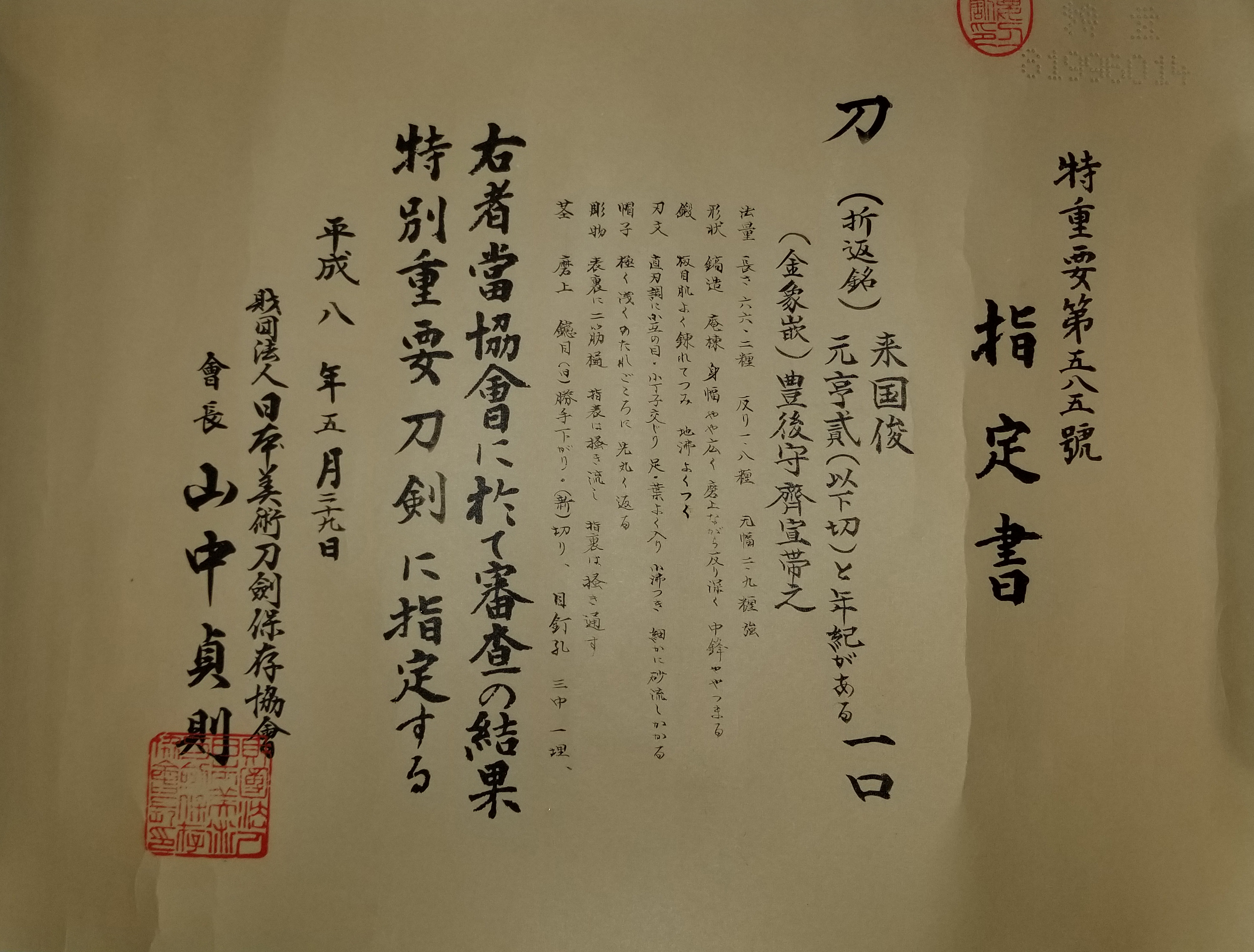
translation:
|
|
Rai Kunitoshi-Magotaro
Kamakura, Genkō two, 1322]\ 2nd Yr 1322 AD,
worn by Kagoshima daimyō Shimazu Narinobu (島津斎宣, 1773-1841)
Tokubetsu Juyo - an Art Treasure

Juyo Token certificate

translation:
Jūyō No 585
Certificate
katana, orikaeshi-mei: Rai Kunitoshi (来国俊) Genkō ni (元亨貳) (ika-kire) (to nenki ga aru) (bears a date signature of Genkō two, 1322)
kinzōgan-mei: Bungo no Kami Narinobu kore obiru (豊後守斎宣帯之) ("worn by Bungo no Kami
Narinobu")
Measurements: nagasa 66.2 cm, sori 1.8 cm, motohaba 2.9 cm
Keijo: shinogi-zukuri, iori-mune, relatively wide mihaba, despite the suriage a deep sori, rather compact chū-kissaki
Kitae: excellently forged itame with plenty of ji-nie
Hamon: suguha-chō in ko-nie-deki mixed with ko-gunome, ko-chōji, many ashi and yō, and fine
sunagashi
Bōshi: shallow notare with a roundish kaeri
Horimono: on both sides a futasuji-hi which runs on the omote side as kaki-nagashi into, and on the ura side as kaki-tōshi through the tang
Nakago: suriage, old yasurime katta-sagari, new yasurime kiri, three mekugi-ana (one plugged)
According to the result of the shinsa committee of our society we judge this work as authentic and rate it
as tokubetsu-jūyō-tōken.
May 29, 1996
[Foundation] Nihon Bijutsu Tōken Hozon Kyōkai, NBTHK
[President] Yamanaka Sadanori (山中貞則)
Juyo Zufu
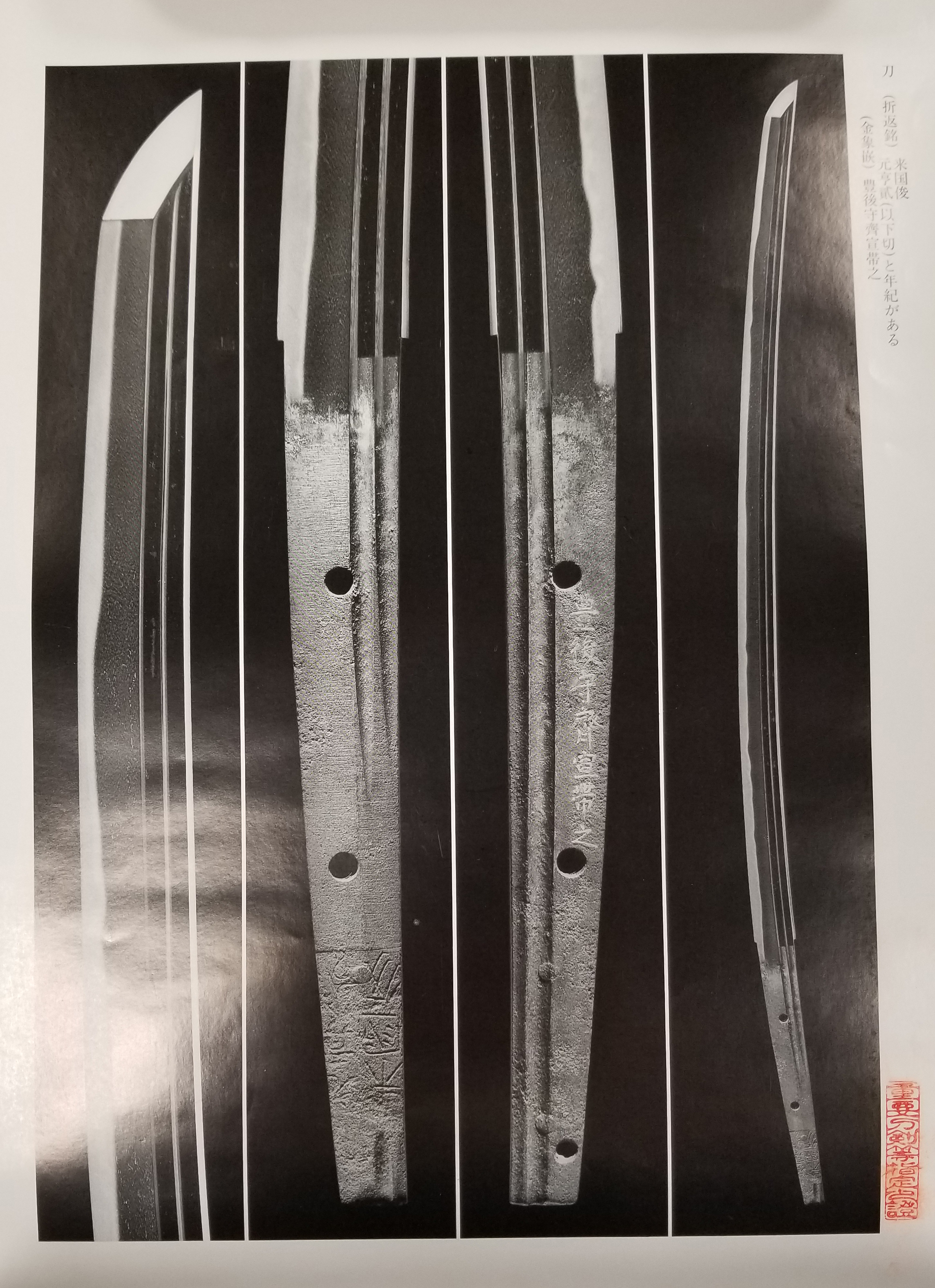
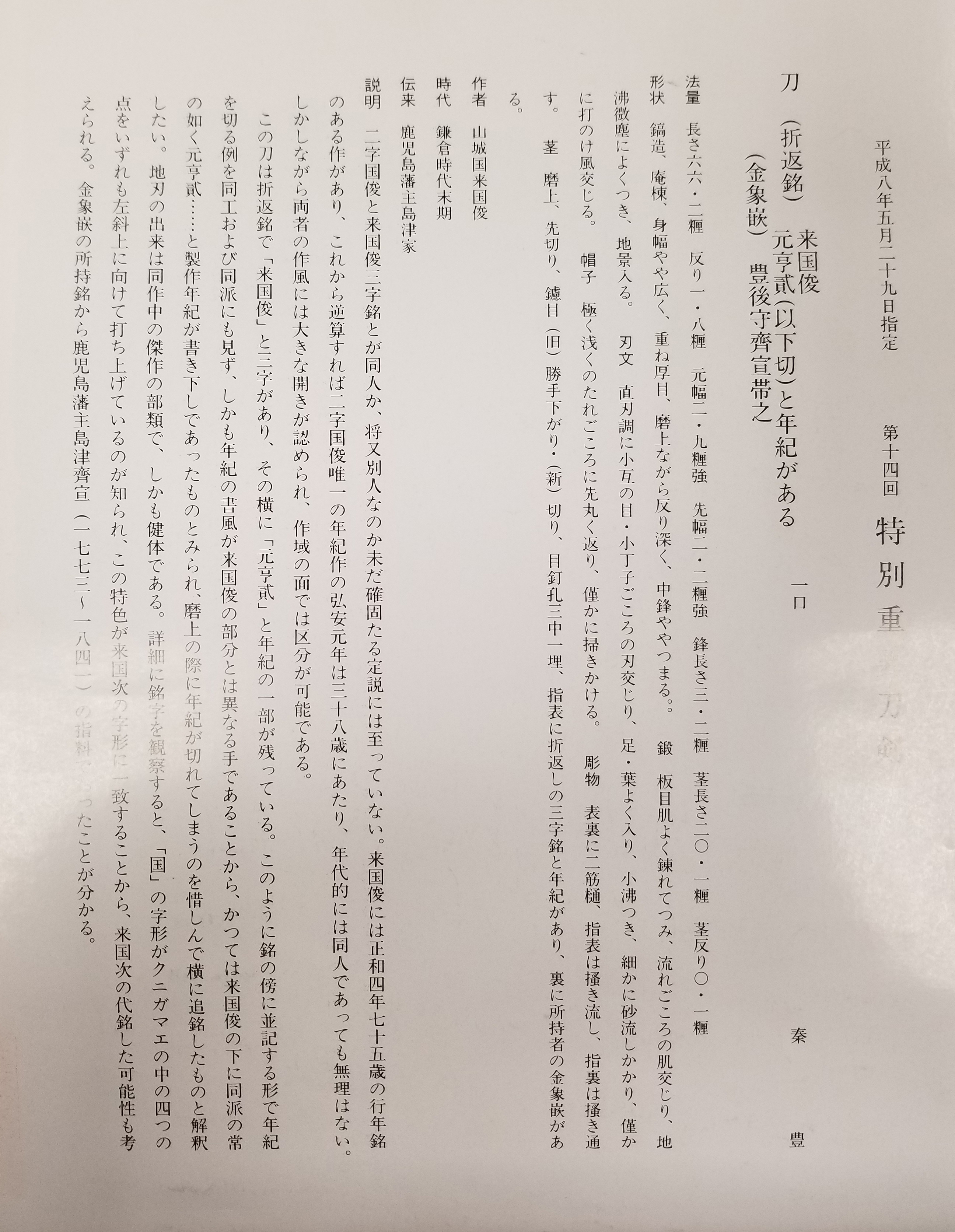
translation:
Tokubetsu-jūyō-tōken at the 14th tokubetsu-jūyō shinsa held on May 29, 1996
katana, orikaeshi-mei: Rai Kunitoshi (来国俊) Genkō ni (元亨貳) (ika-kire, below cut off) (to nenki ga aru) (bears a date signatute of Genkō two, 1322)
kinzōgan-mei: Bungo no Kami Narinobu kore obiru (豊後守斎宣帯之) ("worn by Bungo no Kami
Narinobu")
Tai Yutaka (泰豊)
Measurements
nagasa 66.2 cm, sori 1.8 cm, motohaba 2.9 cm, sakihaba 2.2 cm, kissaki-nagasa 3.2 cm, nakago-nagasa 20.1 cm, nakago-sori 0.1 cm
Description
Keijo: shinogi-zukuri, iori-mune, relatively wide mihaba, thick kasane, despite the suriage a deep sori, rather compact chū-kissaki
Kitae: excellent and densely forged itame that is mixed with some nagare and that features chikei plenty of ji-nie
Hamon: suguha-chō in ko-nie-deki mixed with ko-gunome, ko-chōji, many ashi and yō, fine sunagashi, and a few uchinoke
Bōshi: shallow notare with a roundish kaeri and a few hakikake
Horimono: on both sides a futasuji-hi which runs on the omote side as kaki-nagashi into, and on the ura side as kaki-tōshi through the tang
Nakago: suriage, kirijiri, old yasurime katta-sagari, new yasurime kiri, three mekugi-ana (one plugged), the sashi-omote side bears an orikaeshi niji-mei plus date and the ura side a kinzōgan-mei of the name of a former owner of the blade
Artisan: Rai Kunitoshi from Yamashiro province
Era: end of Kamakura period
Provenance: Shimazu (島津) family, daimyō of the Kagoshima fief
Explanation
It has not yet been determined with certainty if Niji-Kunitoshi and Rai Kunitoshi were the same person or not. There exists a work by Rai Kunitoshi which is dated Shōwa four (正和, 1315) and which is signed with the supplement made at the age of 75. The only known dated work of Niji-Kunitoshi is from Kōan one (弘安, 1278). Calculting back from the age given with the Shōwa four work, we learn that Rai Kunitoshi was 38 years old in Kōan one and so it is theoretically very well possible that we are facing here a single smith. However, we recognize significant differences in workmanship and so we can distinguish between a Niji-Kunitoshi and a Rai Kunitoshi style. This blade bears an orikaeshi-mei "Rai Kunitoshi" with remnants of the date "Genkō two" chiseled next to the niji-mei. This way of dating a blade is neither seen at Rai Kunitoshi nor at the Rai School in general and the characters are also executed in a different manner as the signature itself. Now the Rai smiths did occasionally date in kakukudashi manner, i.e. with the date being chiseled below of the signature (on the same side of the tang). Therefore, it is possible that this blade was indeed dated Genkō two in kakikudashi style, that this date, being inscribed below of the signature, was inevitably lost when the blade was
shortened, but that someone wanted to preserve that information and decided to add the year next to the folded-over niji-mei. The jiba of this blade ranks on one level with the greatest masterworks of this smith and is in perfect condition. A closer inspection of the character for Kuni reveals that the four dots within the box radical are chiseled in a slanting manner, going from bottom right to top left. This is a characteristic feature of Rai Kunitsugu's (来国次) signatures and so it is possible that the signature is a daimei of Rai Kunitsugu.
The kinzōgan-mei states that this blade was once worn by the Kagoshima daimyō Shimazu Narinobu (島津斎宣, 1773-1841).
end Juyo zufu translation.
Koshirae
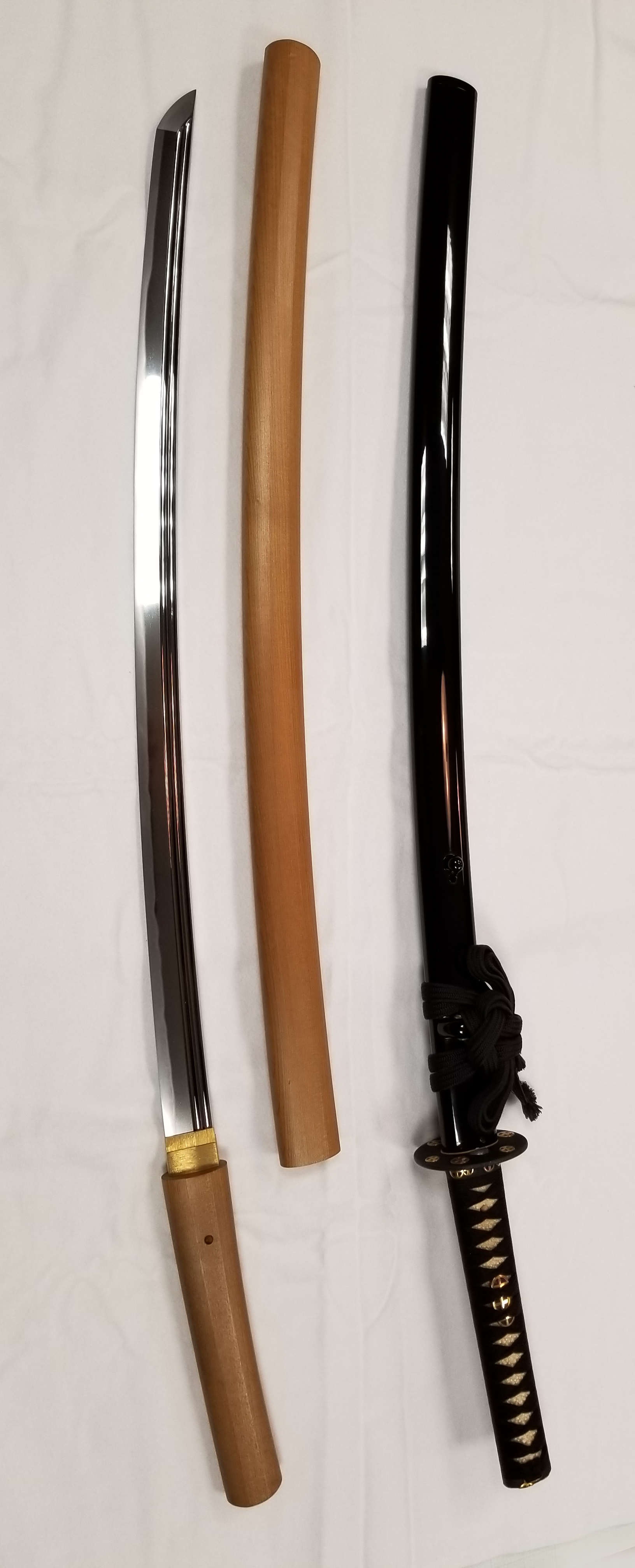
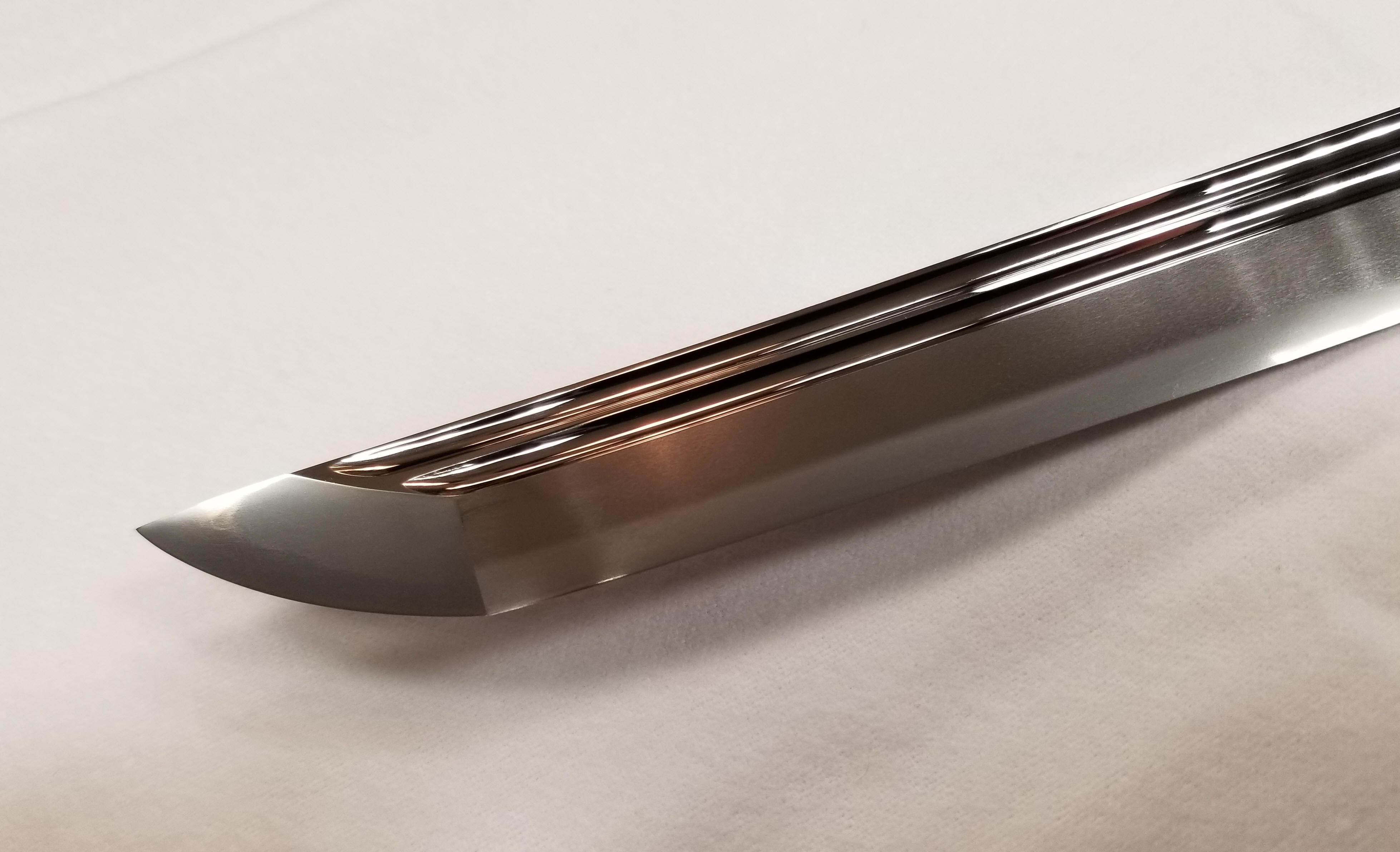
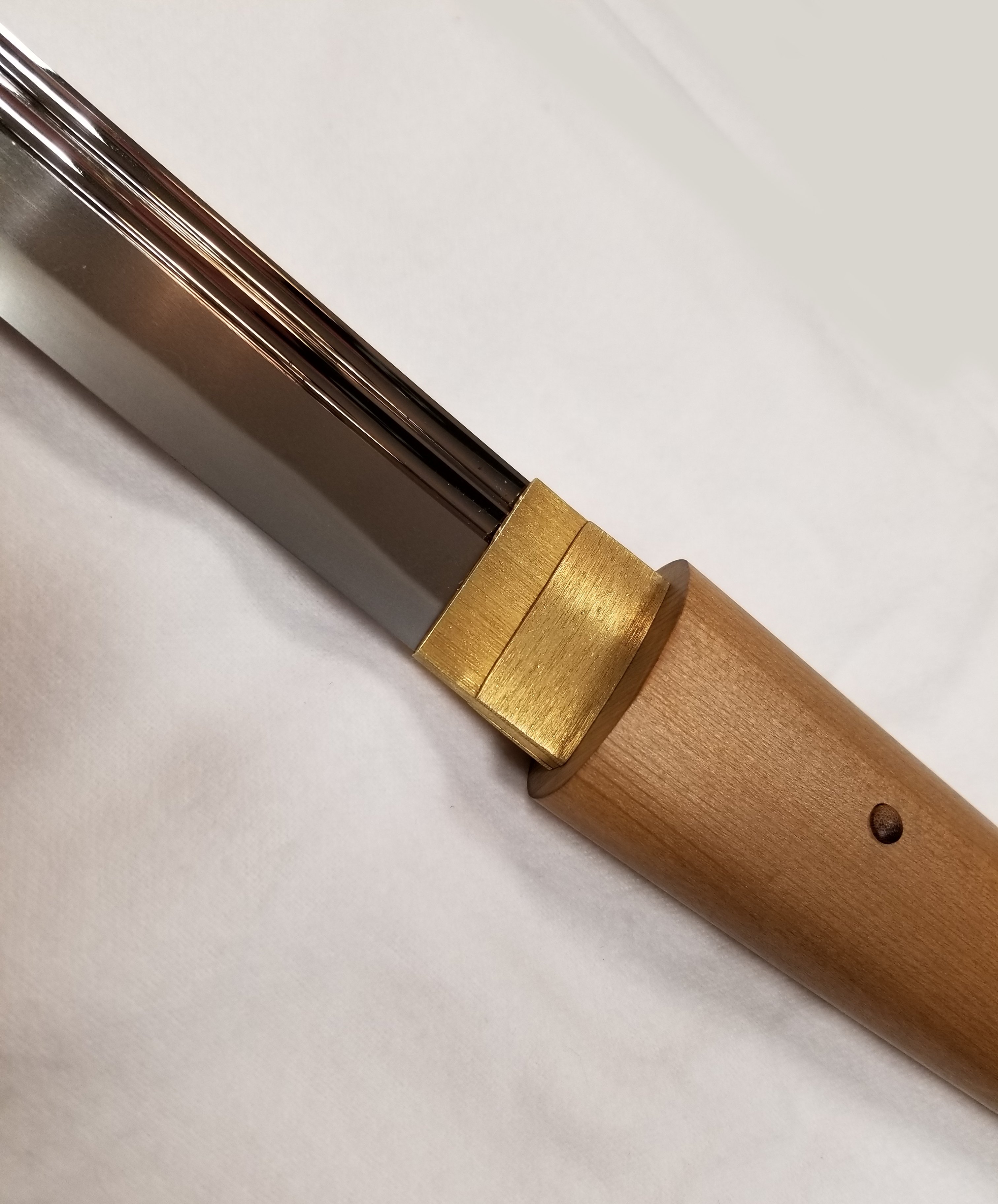

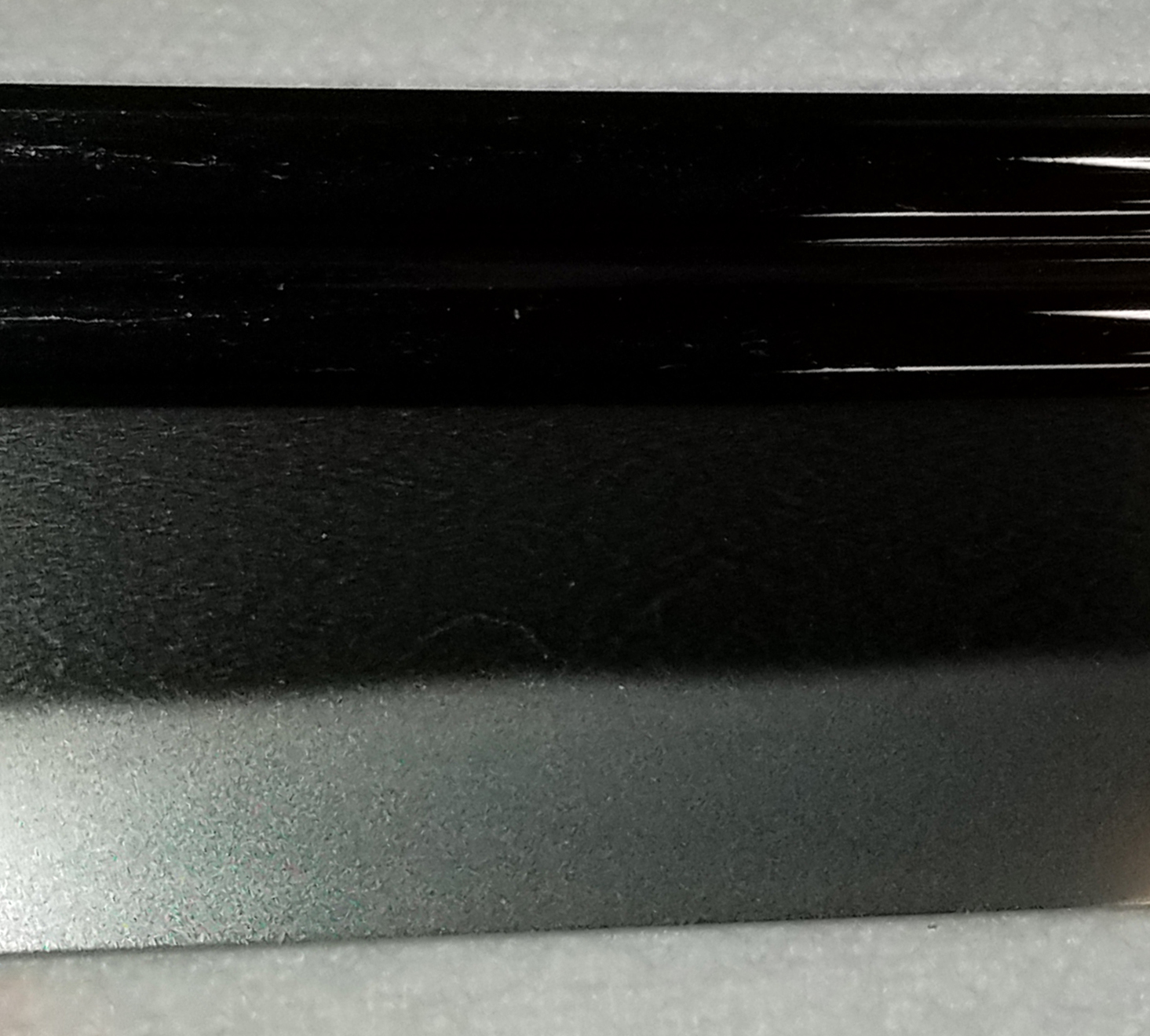
Hada & Hamon

Hada / grain structure

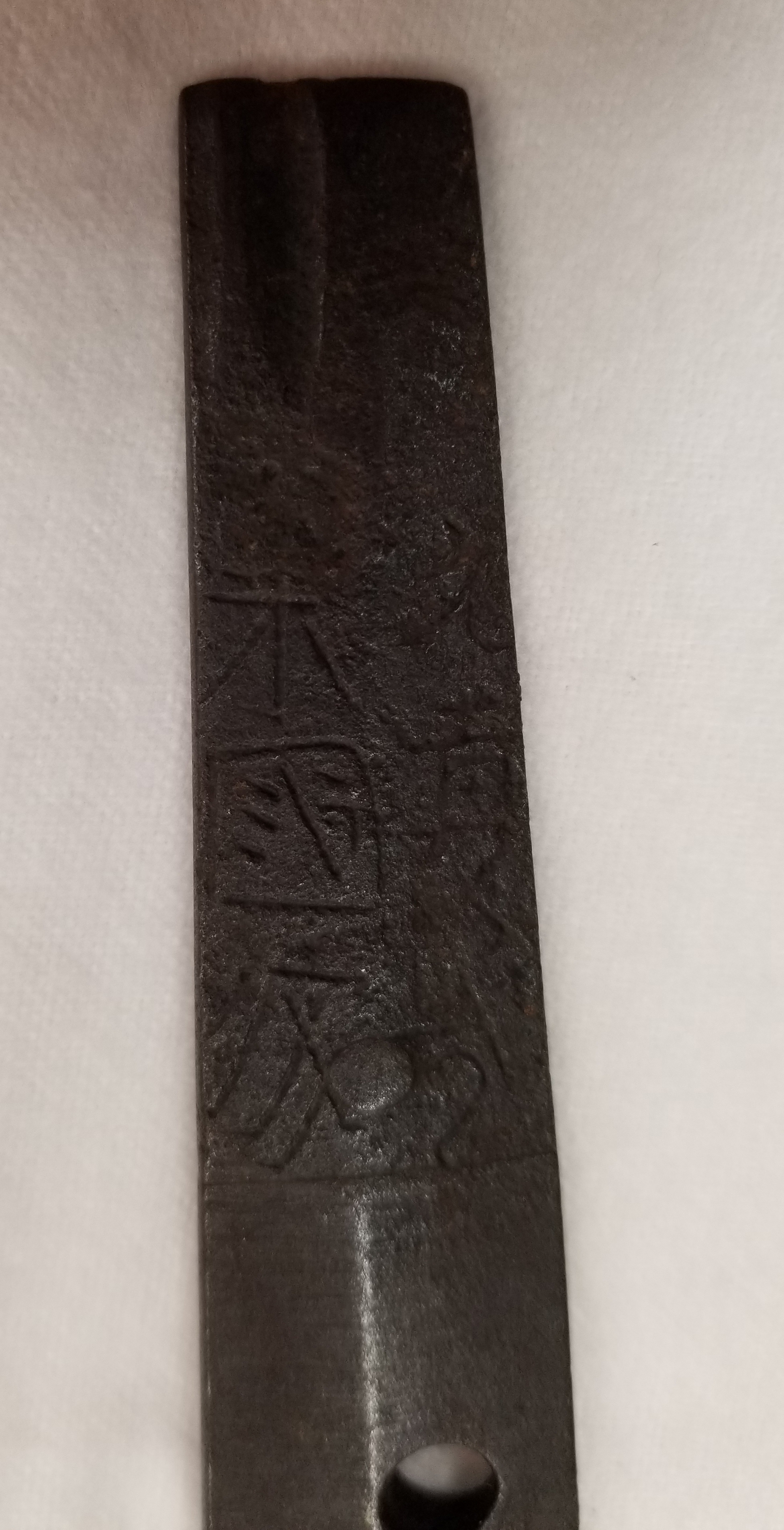
translation
katana, orikaeshi-mei (fold over signature): Rai Kunitoshi (来国俊) Genkō ni (元亨貳) (ika-kire, below cut off) (to nenki ga aru) (bears a date signature of Genkō two, 1322)

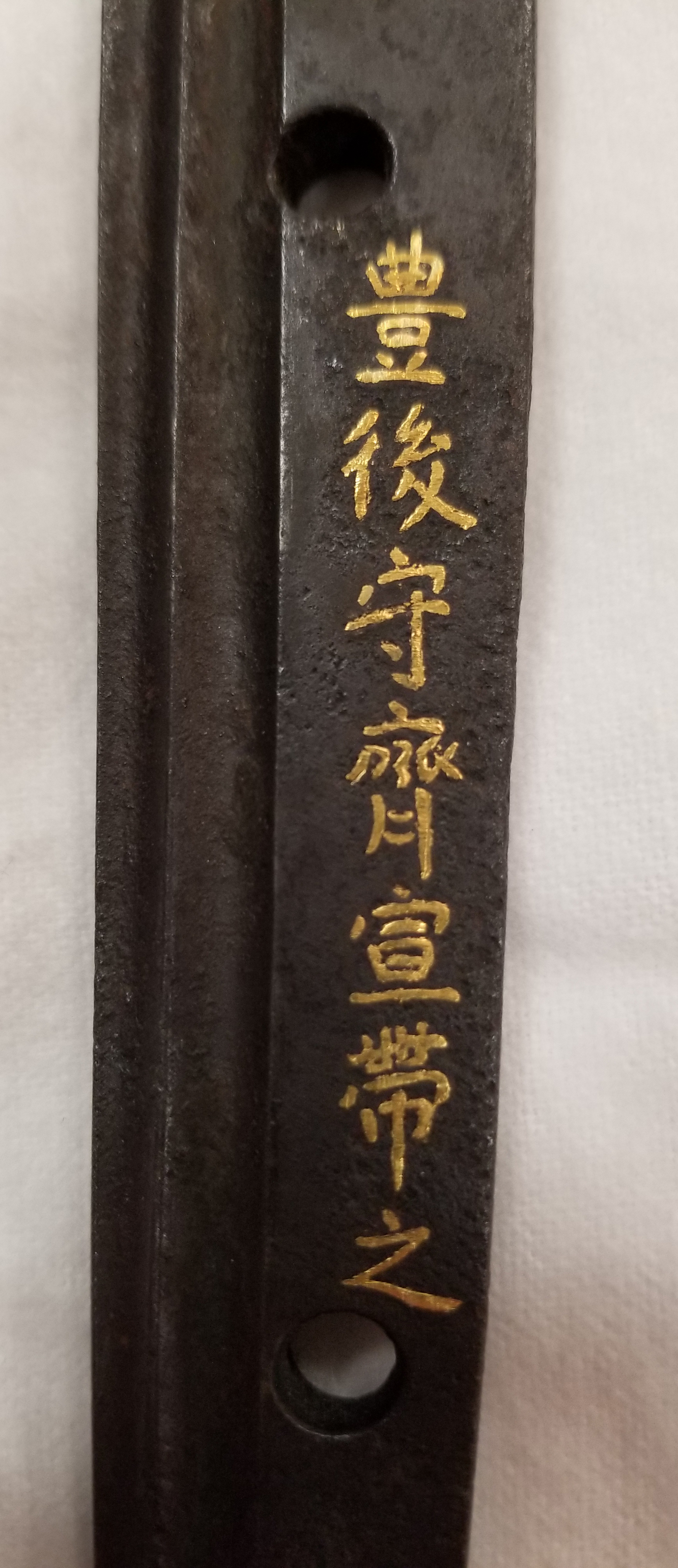
translation
kinzōgan-mei: Bungo no Kami Narinobu kore obiru (豊後守斎宣帯之) ("worn by Bungo no Kami Narinobu")
This Sword is not available for purchase.
If you wish to purchase a Japanese Sword please view our Nihonto for sale page or contact us directly via email or contact us @ 1(608) 315-0083 any time, please include specifics of what you seek, i.e.: Katana, maker, era, price range etc.
Pictures and content may not be copied without the express permission of samuraisword.com ©